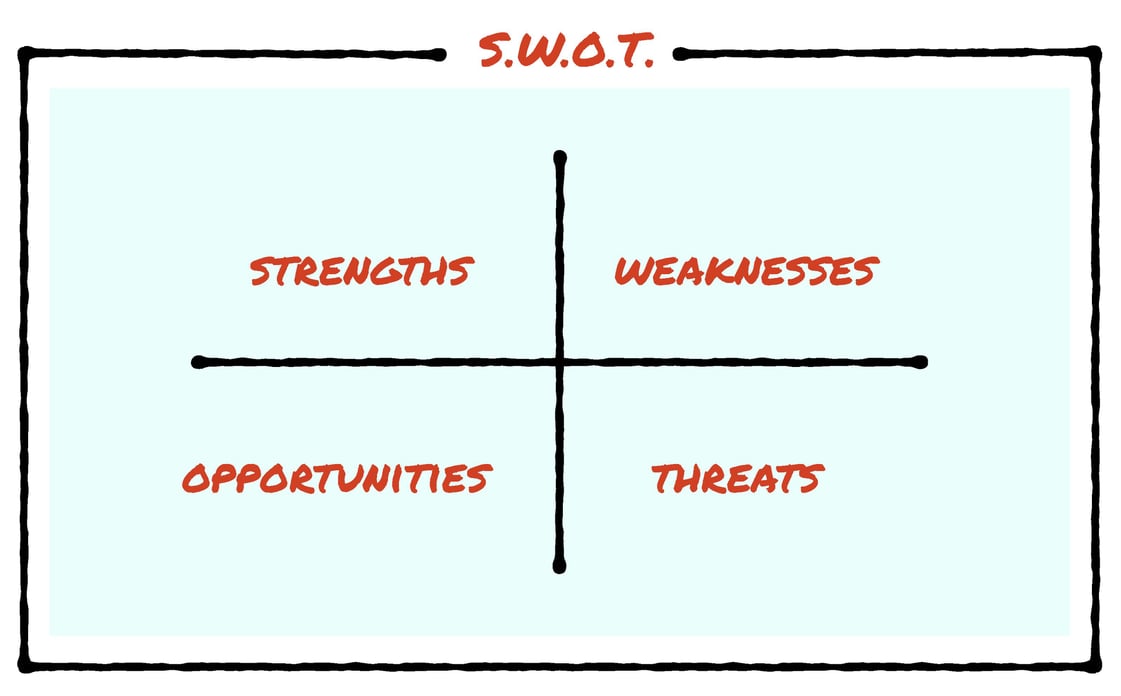
Conifer's 7 Favorite Design Research Frameworks

The world around us is complex. How people make decisions, what the next best step in an experience should be, how day-to-day habits are established or changed are just some aspects of consumers’ lives that we study in order to unearth actionable insights. Frameworks help us break down and make sense of data that seem detailed or overwhelming. Our team compiled our seven favorite, and most used, design research frameworks for you to enjoy!
1. 5E Model
The 5E model is a framework for breaking down the full user experience with a product or service. These models help us move beyond simple engagement moments to understand why and how users enter into an experience and what they carry forward with them at the end.
2. SWOT
This is an important framework designed to help teams synthesize and get to the 'so-what' by mapping out business or product strengths, weaknesses, opportunities, and threats. The results can be a powerful roadmap for what to do next: work on amplifying positives (the “S” and “O”) and find ways to solve for, reframe, or overcome the challenges and roadblocks (the “W” and “T”).
3. 6 Things to Look For to Identify Unmet Needs
Ever wonder how you can find unmet needs when they are often unspoken? You have to listen, and look, closely. Conifer's 6 Things to Look For acts as our observation cheat sheet to help us spot the unmet needs when we see them in action.
4. Empathy Mapping
A great synthesis tool for mapping users' emotions, actions, mindsets, and key quotes. Empathy maps help you highlight say vs. do gaps and bring user language and beliefs to life. They give dimension to your understanding of customers you are developing personas, user segments, typologies or even just creating participant profiles after field-interviews
5. The Habit Loop
We love using Charles Duhigg’s Habit Loop framework from his book The Power of Habit as a tool to understand behavior change opportunities within our own research. What we like about this incredible simple starting structure is that it allows you to build your own layers on top of it. In our research we look to find patterns and groupings in different types of cues, routines, and rewards to understand and deconstruct existing habits. This allows us to identify new opportunities or even design interventions and alternative experiences to achieve behavior change.
6. 10 Types of Innovation
A best in class framework by our friends at Doblin that reminds us to look for innovation opportunities in many places instead of just one. We keep the entire deck of innovation cards close at hand during ideation, iteration and innovation pipeline projects to make sure we are capturing opportunities beyond just the product itself.

7. D.V.F.
The Desirability, Viability, and Feasibility (affectionately renamed the "Diane Von Furstenberg Pressure Test" at Conifer) is another invaluable tool for pressure testing concepts. Does it pass all three checkpoints of being desirable to users, being viable for the business in terms of growth, permissibility or profit, and is it technically feasible within the existing processes, partnerships, and supply chain? The stronger a concept performs across these metrics, the bigger the opportunity for success.






